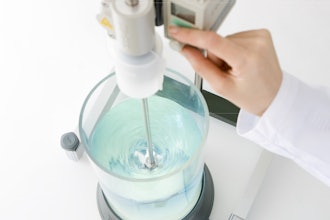
The U.S. is suffering from an infrastructure that is rapidly deteriorating. Not only does this place our status as a global economic leader at risk, but it also puts our public health and safety at risk. Fortifying our nation’s infrastructure will ensure a stable foundation, but requires investment. These investments are currently lacking, and the U.S. needs strong action from congressional and state representatives in order to change the crumbling face of our future.
The American Society of Civil Engineers (ASCE) publishes a report card every four years that grades the U.S. on the physical condition, necessary investments, and performance of its overall infrastructure across 16 categories. Just as in the 2013 report, the U.S. has again scored a pitiful D+.
Although railways, schools and inland waterways have experienced slight improvements, and aviation, bridges, drinking water, and energy remain unchanged, other areas have not fared so well. Even as efforts are made to place more focus on infrastructure restoration, some areas, including parks, solid waste, and transit are still declining. An underwhelming amount of investment has allowed these sectors to degrade.
The Economic Impact
Corrosion is a natural process that at some point will affect the majority of our nation’s existing infrastructure, as almost every industry relies on corrodible metals, including the four million miles of roads that make up America’s national highway system. So despite a strong initial foundation, most facilities will eventually become subject to the effects of corrosion, including the more than 600,000 bridges in place across the U.S. – 30 percent of which are structurally deficient.
Failing to adequately fund the maintenance of the nation’s infrastructure causes a wide range of negative effects. However, according to the ASCE, the investment necessary to mitigate the negative economic impact of a poorly maintained infrastructure is $2 trillion dollars.
Without government intervention, the health of the nation’s infrastructure will not allow us to maintain our position in the global economy. According to the 2016 ASCE economic study, a failure to invest will negatively affect business sales and the U.S. GDP by $10.9 trillion by 2025. This would be coupled with a loss of 2.5 million American jobs.
The U.S. economy will suffer as businesses are impacted by the increased costs of utilities, water, and transportation, to name a few. Exports will also decline in response to these costs.
Hitting closer to home, each American family will lose up to $3,400 per year in disposable income. Poor infrastructure means poorly maintained roads and airports, less reliable utilities, higher costs of manufacturing and distribution, increased vehicle operating costs and slower transportation.
This would extend to higher environmental and safety costs, higher costs of farming, heightened water sanitation risks, increased public safety issues, and more. By allowing U.S. infrastructure to corrode and deteriorate, we put our viability in the global economy, our quality of life, and our public safety as a nation at risk.
A redirection of efforts towards rebuilding, reinforcing, and maintaining our overall infrastructure is vital to the stability of the country’s businesses, communities and the environment. There are proven methods of controlling corrosion, which can help maintain the integrity of our infrastructure, and allow it to support the nation’s productivity.
By using corrosion-resistant materials, protective coatings, and/or cathodic protection, we can reduce the cost of infrastructure maintenance and vastly decrease the rate of corrosion. Properly protecting our infrastructure will save countless dollars in repair and replacement, and ensure a safe, structural future for the U.S.
Merrick Alpert is the president of EonCoat.






















